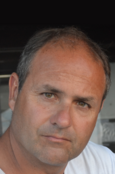Project
Towards a holistic assessment of eel, salmon and sea trout

Diadromous Species: moving towards new Paradigms to achieve holistic scientific Advice
There is a consensus amongst scientists that the migratory fish stocks of the European eel and Atlantic salmon are in a poor state. However, when it comes to the cause of the critical stock situations the debate becomes more controversial: hydropower, fishing, habitat loss or pollution; the list of potential causes is long and their analysis complex: Migratory fish are often widespread, and their biology and (anthropogenic) stressors vary in both, time and space. The DIASPARA project aims to herald a paradigm shift in stock assessment of diadromous fish: From data collection and management, to the development of suitable models, a framework for improved policy advice is being created. Away from pure status assessment towards holistic analyses.
Background and Objective
Diadromous fish are often widely distributed, occurring in various habitats from freshwater to the open ocean, associated with a multitude of different environmental and anthropogenic and environmental stressors. While the assessment of their stock status per se is regularly conducted (e.g. through monitoring of juvenile fish abundance), an analytical assessment of the stock (or stocks) is challenging, since it needs to account for spatio-temporal variation in stock abundance, key life history traits (e.g. growth) and potential stressors across the distributional range of the respective species. This is particularly important for commercially exploited species European eel (Anguilla anguilla) and Atlantic salmon (Salmo salar).
The aim of DIASPARA is to provide a framework that enables the development and consolidation of consistent regional stock assessments to derive a holistic picture of diadromous fish stocks, ultimately facilitating a more differentiated and thus improved advice. To this end, the data already available will be comprehensively evaluated, structures for future data management will be created and models for their evaluation will be developed.
Target Group
The project is aimed at a broad spectrum of stakeholders: firstly, the foundations are laid for a better stock assessment by the scientific community; at the same time, the necessary prerequisites (e.g. data requirements) are defined which will ultimately enable improved policy advice and targeted management.
Approach
In order to achieve the above-mentioned objectives, three work packages were defined in DIASPARA over period of two years:
- Spatio-temporal analysis of biological stock parameters
In this work package, existing data will be inventoried and analyzed to facilitate their usable in stock models and to develop proposals for improved data collection.
- Database development
This work package aims to develop a Europe-wide database that can process the corresponding spatial structures and the multitude of different influencing factors (e.g. biological data, fisheries or environmental data) and enable the usability of the data for a holistic European stock assessment.
- Development/improvement of stock models
The aim of this work package is to further develop existing stock models of the ICES working groups for salmon and sea trout and to adapt them for the European eel in order to create the basis for a quantitative stock assessment. For this purpose, different modelling approaches are compared and spatially and temporally varying stock parameters are integrated to determine which of these approaches can be usefully integrated into the stock assessment, what data quality/resolution is required here and how great the corresponding added value is. Furthermore, various approaches will be examined to improve the performance of the models and increase their practical usability.

Data and Methods
Individual/group biometric data (e.g. EU Data Collection Framework (DCF)); environmental data; spatial inventory modeling; postGreSQL
Our Research Questions
What data are available through ongoing data collections (e.g. EU DCF or Water Framework Directive) and which gaps exist?
How do key life-history-traits of target species vary across Europe and on which geographical and temporal scales?
Which methods are best suited to adequately and efficiently model the population as a whole?
Links and Downloads
Thünen-Contact

Involved Thünen-Partners
Involved external Thünen-Partners
- Institut national de recherche pour l’agriculture, l’alimentation et l’environnement (INRAE)
(Paris, Toulouse, Montpellier, Avignon, Ivry-sur-Seine, Clermont-Ferrand, Rennes, Thiverval-Grignon, Dijon, Orleans, Bordeaux, Pierroton, Frankreich) - Swedish University of Agricultural Science - SLU
(Uppsala, Lysekil, Schweden) - Natural Resources Institute Finland (LUKE)
(Helsinki, Mikkeli, Jokioinen, Vanda, Finnland) - EPTB Vilaine
(La Roche Bernard, Frankreich) - AZTI-Tecnalia (Marine and Food Technological Centre. The Marine Research Division) / Fundación AZTI
(Bilbao, Sukarrieta, Spanien) - Wageningen University & Research (WUR)
(Wageningen, Niederlande) - Marine Institute (MI)
(Galway, Irland) - Inland fisheries Ireland
(Dublin, Irland) - L'Institut agro
(Paris, Frankreich) - Office Francais de la Biodiversité (French Biodiversity Agency (OFB))
(Vincennes, Frankreich) - University Rome tor Vergata (Università degli studi di Roma Tor Vergata)
(Rom, Italien)
Funding Body
-
European Union (EU)
(international, öffentlich)
Duration
5.2024 - 4.2026


![[Translate to English:] [Translate to English:]](/media/_processed_/2/9/csm_Embryo-Exp_Gelege_9F_dpf5-200513111619_c8534a8199.jpg)
![[Translate to English:] [Translate to English:]](/media/_processed_/2/9/csm_Embryo-Exp_Gelege_9F_dpf5-200513111619_9027994d44.jpg)




